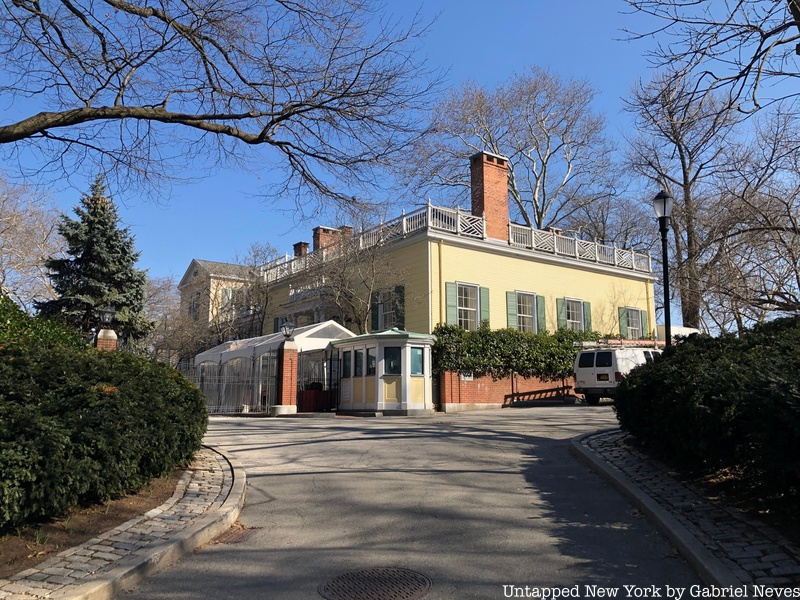96th Street in Manhattan

The northernmost terminal for the Q train heading to Coney Island is located in a section of the Upper East Side called Yorkville. The area is known historically as an important camping ground for George Washington’s Continental Army during the American Revolution. The forces in Yorkville were positioned along the East River to protect Manhattan from British invasion and to support troops on Long Island if a retreat was ordered. That retreat did in fact happen, which prompted the division to regroup and fight successfully in a battle at Harlem Heights in 1776.
Yorkville has been home to a mixture of middle and working-class families since the 1850s. The largest populations consisted primarily of German and Irish immigrants, with Slovak, Czech, Hungarian, Polish, and Lebanese people also present in the area. The neighborhood saw a major increase in its German population after the General Slocum disaster that occurred just off the shore of Yorkville in 1905. A majority of the passengers were from a German church that congregated on the Lower East Side, which inspired them to move uptown as a way to unite and display solidarity for the victims of the accident. German culture is prevalent in the neighborhood to this day with restaurants, bakeries, and an annual Steuben Parade displaying the heavy influence on Yorkville’s current demographic.
Yorkville has seen a steady decline in its ethnic diversity ever since the end of the 1920s. Central European residents had been trickling away from the neighborhood ever since the end of the First World War due to heightened tension around their nationalities. This social predicament was also coupled with the demolition of the elevated subway line on 3rd Avenue in 1955. Mansions and businesses located near the El were destroyed during the demolition process and were replaced with high-rise buildings to accommodate newer residents to the neighborhood.
One notable landmark is the Papaya King located on the corner of 86th Street and 3rd Avenue. It was the first-ever Papaya King location in New York City and has been in operation since 1932. It was known primarily for its tropical fruit drinks for the first several years it was open, but then it began selling fast food options like hot dogs, which was a popular fast food choice for German-Americans in Yorkville.

The Gracie Mansion, located on 88th Street and East End Avenue, has been the official residence for city mayors since the 1930s and is currently the home of Mayor Eric Adams and his family. The two-story, Federal-style wooden mansion was completed in 1799 on the site of the Belview Mansion, which served as a strategic lookout point during the Continental Army’s encampment. The mansion is also used as a museum, offering visitors guided tours of the property and the building itself.

The Asphalt Green recreation center on 91st Street and York Avenue got its name from the Municipal Asphalt Plant that was built there in the 1940s. The same building is used today by the recreation center and is characterized by its arched shape made of reinforced concrete. The building is also close to one of the Department of Sanitation’s (DOS) main waste transfer facilities sitting on the other side of the F.D.R. Drive. Yorkville residents have made numerous complaints about the noise of trucks driving in and out of the facility, as well as the stench from the 5,000 tons of waste processed there each day. The location is strategic to the DOS because it reduces truck emissions and eases pressure on certain neighborhoods in the city that have limited means to transport the waste collected from their streets.

Now that we had the opportunity to venture around the neighborhood, let’s ride the line!





